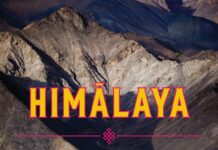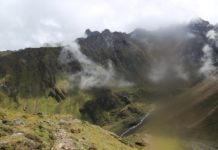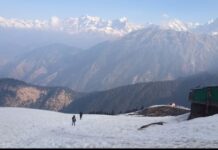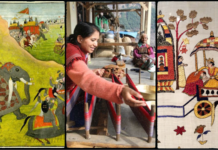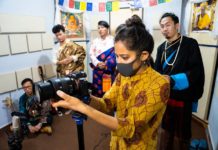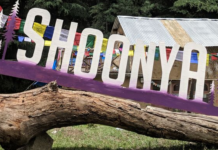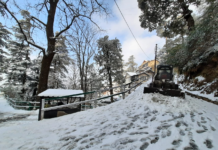Few places on earth can mark so dramatic change in landscapes. Flanked by the majestic Himalayas Lahaul and Spiti houses, millions of Tibetans and is a land of splendid Buddhist art and culture. Also, known as the “Middle Land’’ the land between Tibet and India. Lahaul and Spiti have been regarded as the least populated regions in India and a ticket to several northern Himalayan mountains. Offering a shelter to semi-nomadic shepherds also known as ‘Gaddi ‘and serves as a great grazing land for their animals across several villages in summer. Both the valleys are separated from two different passes i.e.Rohtang Pass (13,054ft) and KunzumPass (15,059ft. Gateway to Vajyarana Buddhism, the local population preaches this culture very similar to the Tibet Autonomous Region and the Ladakh region of India.
In this project, I intend to show how in various ways empowerment can be represented through sustainability in starkly desolated regions of India like Lahaul and Spiti. ‘A world within a world’ as described by Rudyard Kipling is an untold geo climatic mysterious desert nestled at 3,600m along the Trans Himalayan belt of Himachal Pradesh. To put it simply its intention is to focus by addressing the development issues, sustainability thereby monitoring, collecting data, analyzing, explaining, identifying and also providing assessments of social impacts and related developments through various steps of empowerment. It not only focuses on the problems but also how the emergence of the concept of empowerment sustainability can be seen as an area of theory development whereby the new societal paradigm related to sustainable development is manifesting.
Objectives:
To understand the meaning of sustainable empowerment through various approaches thereby understanding social, economic and cultural condition by creating the very idea of the new ecological paradigm which is an important legacy of sustainability.Hence the project objectives of sustainable empowerment would be through following undertaking and approaches –
1.Poverty Alleviation Program enhancing gender policy-
Why this approach?
Its aim is to create a microfinance for an integrated programme for evading poverty and vulnerability, thereby increasing livelihood for the poorest households, especially women which are more prone to female poverty. The cold desert has widely populated remotest villages; therefore the very idea of policy instrument is necessary like the importance of small savings, loan provision, promoting group information for community development, ensuring certain methodologies targeting poverty in these areas. Coming back to gender policy, I want to highlight it because the sex ratio in Lahaul and Spiti of women is 903 per male population (low sex ratio), hence women’s empowerment and household level poverty approach which acts an alliance will enable to empower women among themselves. It will so provide sustainability by establishing a local level participatory institution for long-term community self-reliance and self-determination poor women and remote areas also encouraging women to take part in Self Help Group increasing self-sufficiency.
- Financial Empowerment Self Sustainability Paradigm –
Why this Approach?
Financial empowerment through setting up of self-sustainable microfinance programmes which will provide access to microfinance services for large number of poor including women too. Hence women’s access to microfinance will automatically improve the economic empowerment, individual’s choice, equal access also increasing commitment and innovation without any intervention in the macroeconomic growth.
It will look at how participation of financial empowerment will improve the proficiency through consultation for market relevance thereby creating group formation for self-help in order to decrease the cost of service delivery. Each village is placed isolated from each other where connectivity is inevitable lacking to banking and services hence this Paradigm thus provides ways of using the formed groups cutting down the cost of service delivery creating a demand for economies of scale. Reasons for targeting women? The sustainability programmes ascertain a way where contribution to women’s economic activity like agriculture will lead to economic growth.
- Empowerment through cultural Symbolism and attaining knowledge of history, sustainability of Ethnicity, Identity and other truths-
Why this Approach?
The desert has been a motherland to thousands of Tibetans belonging to the Mahayana sect of Vajyarana Buddhism brimming with an authentic insight of Spitian Culture enclosed with traditional dance, dresses, home stays, architectures, local cuisine and songs deeply rooted, into the diversity of Spiti. The purpose is to delve into historical backgrounds of various unique aspects of traditional Tibetan Buddhist culture, oldest monasteries and temples of the world thereby procuring conscious and awareness about their particular socio-cultural sustainability in order to flourish for generations. It focuses how these monasteries are products of their own particular historical and cultural contexts and they do not exist as isolated entities in societies. Hence they have evolved with other social transformations in a dialectical process. For example, the major sects in Spiti: Sakyapa, Nyingmapa and Gelugpa thrives in a specific region and their uniqueness, distinct practices adding respect, tolerance for Diversity in Spiti. Coming back to the sustainability of ethnicity I would like to give one more example how cultural identity, race, an ethnic group is preserved by empowering aestheticism denotation. In Pin Valley (Spiti ) – Bhuchens are an exclusive rare sect of Buddhist culture that preaches socio and ecological morals to the audience through their diverse performances i.e. TholdanGyaldo which was invented in early 11th Century A.D, hence to be found only in Spiti Valley when it disappeared from Tibet and Ladakh. To ensure the prosperity of Buddhist culture, keeping alive and thereby sustain, the essence of empowerment through customs and traditions are necessary which also includes preservation of Dhangkar Monastery for the restoration of heritage site dated to be 1000 years old in Spiti
- Empowerment through sociological environment research for a modern socio-economic sustainable development –
Why this Approach?
The aim is to investigate attitudes towards energy use, pollution, environmental degradation, unequal development. This also includes energy politics thereby studying the essence of modernization, alternative energy technologies and energy policies:
1) the importance of greenhouse since the region is deprived of green vegetables. Inculcating such project will enable the locals to cultivate vegetables not only in summers but also in winters where the temperature dips down to -25degree promoting good health, reducing emissions and also providing them income.
2) Taking initiatives on Carbon neutral, zero Carbon programs and investing in renewable energy options like passive solar houses, solar water heating systems, cooker and solar and wind energy alternatives.
3) Construction of solar passive structure is very important as the huge amount of fuelwood, coal and wood is burnt for heating water, keeping the rooms’ warm that emits a lot of Carbon hence this structure will enable better hygiene through the availability of hot water thereby cutting Carbon leading to drastic reduction in fuelwood usage in every household.
4) Modern farming technology, improvements in livestock and grazing reserves- Agriculture solely depends on when glacier and snow start melting in Lahaul and Spiti. To improve the quality of farming and avoiding complexity there are production practices that can be employed by the farmers like the use of Hybrid seeds of a selected variety of a single crop, technologically advanced equipment and energy subsidies in the form of irrigation water, fertilizers and pesticides. It will also look how the farmers face turmoil in dealing with the soil and then turning the adversity into assets spreading green ideas, green thinking and values. Also establishing the green governance with new regulatory mechanism distinguishing ‘good (green) and versus bad (Non- green) innovations and developments.
5) Provisions for safe drinking water and safeguarding of water bodies due to shortage of water in upland villages in Lahaul and Spiti.
6) Preservation of endangered animals, flora and fauna, fossils and various medicinal plants in one of the most well known national parks of Lahaul and Spiti I.e. Pin Valley National Park and establishing various trails of Spiti to enhance Buddhist Culture.
7) Reduce, Reuse and Recycle- Segregating the waste properly, decreasing the pressure on natural resources and thereby reusing and recycling the waste.
8) Establishing Bio Gas and Wind Energy.
The reason for choosing this project?
Establishing a sense of sustainability which is presented in various ways through empowerment. The strategies of sustainability through empowerment focuses on livelihoods linked with empowering -nature, culture, women, modernization, various technological techniques and economic development, also inculcating the idea of conservation which forms the very basis of our genesis.
Conclusion:
Having listed down the various ways and approaches of empowerment which are represented through sustainability is therefore achieved by empowering each objective, thus sustainability revolution in the least populated region of India like Lahaul and Spiti aims to focus by accelerating sustained creative challenge, the paradigm shifts which entails new ways to frame think and act that are challenges to be mastered and developed.
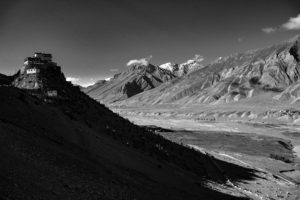
1.Some of the oldest monasteries are to be found in the highlands of Lahaul and Spiti and it becomes very important to conserve them because these monasteries have had carried the very essence of philosophical preaching by the Vajyarana Budhhists, in order to pass to the future generations. As I mentioned in the project that sustainability through cultural empowerment is attained by inculcating the idea of cultural consciousness in a society. These monasteries are to be found in areas like Lahaul and Spiti as it said to be vanishing from Tibet and Ladakh, hence to prosper the Buddhist culture also enhance livelihood, restoration is necessary by empowering customs and traditions.
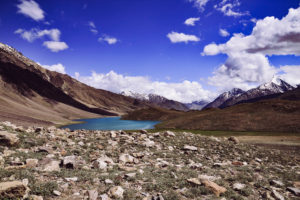
2.One of the most important natural resources for the human survival i.e. Water which is not abundant in high elevation desert. Initiatives like artificial glacier are focused on the farming community so that they cultivate more land than they are being able to due to a shortage of water. Also implanting the idea of water safety programs” through short drama, skits related to sustainability and sustainability can be achieved by empowering water management systems
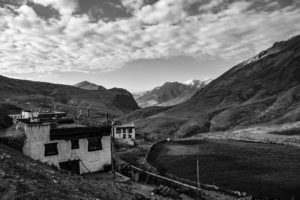
3.Encouraging the villagers to develop energy efficient housing through the development of Solar Passive Houses and infuse zero carbon programs, carbon neutral because many of them are involved in burning fuelwood and coal for heating water. These energy efficiency building will improve the lives of the people by insulating heat in extreme and harsh climate also mitigating global warming. The buildings are built in such way that it faces south which integrates passive solar architect to gain heat (either through an attached greenhouse, double glazing windows or Trombe walls) and thermal insulation to retain the heat produced inside the building. The craftsmanship is based on the local materials (dung, straw, mud and the brick) to improve access to reliable, self-sufficient sustainable energy. I would like to focus more on Empowerment Sustainability because by empowering an initiative, sustainability can reach its heights beyond its imagination. One should not focus only on a particular initiative, but how to empower it and achieve the target.

4.Widely known national park in Lahaul and Spiti District of Himachal Pradesh i.e. Pin Valley national park provides dwelling to several endangered animals, birds, flora and fauna. Two of the endangered species i.e. Snow Leopard and Siberian Ibex are found rarely due to evasive nature; hence its protection is necessary for accomplishing sustainability. Among the flora and fauna, there are many aromatic medicinal plants forming a vital part of traditional healing systems. Not to be found across the entire Trans Himalayan region, these alpine pastures have a unique quality, providing ailment to people. Wildlife, Flora and Fauna Insurance Schemes are established for empowering Wildlife conservation for a better perspective.
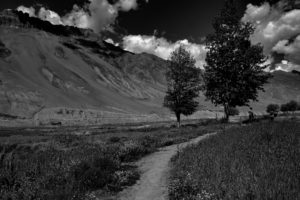
- Agriculture in geo-climatic conditions of the cold desert is quite difficult. Hence it depends upon the melting of snow and glaciers. Hence their agriculture becomes an important part of their socio-economic activity. Water for irrigation comes from the glacier melt which is transported long distance through small channels, known as Kuhls. To improve the quality of farming and agriculture, empowerment of modern economic farming techniques like hybrid seeds of a selected variety of crop and upgrading advanced technology subsidies in the form of irrigation, pesticides etc is essential to avoid any kind of complexities spreading the knowledge of green values since the place is located at a very high altitude.
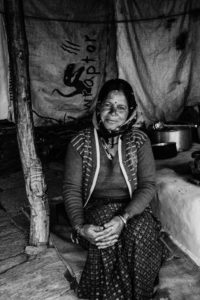
- I have highlighted before in the project about the sex ratio of women in the Lahaul and Spiti region which is 903 per 1000 males. The number of women is less as compared to men, hence women are empowerment is crucial to withstand women poverty. Creating programs at a local level for women so that they empower among themselves establishing a sense of self-sustainability evading poverty increasing livelihood and self-determination, having equal access, enhancing employment also encouraging more women to take part in agricultural work.
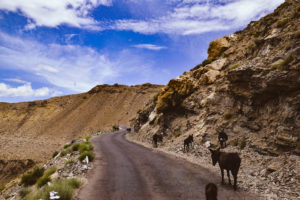
- The desert is placed in a very remote area where the accessibility to each village for finance and various materials becomes a bit difficult, lacking in banking services especially the poor. Financial empowerment for a better self-sustainability through microfinance programs are developed which in turn provide microfinance services for poor and women too. This will, in turn, look at how the very idea of financial empowerment is implemented creating a market forming groups decreasing the delivery cost. This program also contributes to economic growth of women by involving themselves in agriculture and other pastoral activities.
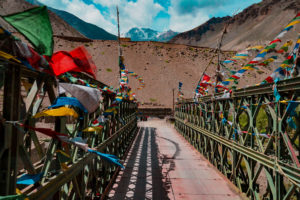
8.One of the important point I would like to mention for achieving sustainability is empowerment through cultural symbolism. Buddhism has flourished in ages through the preaching of the holy Buddhist texts and famous Buddhist Chants “Om Mani Padme Hum” Each of these words carries a significant philosophical saying. The rare sect of Buddhist culture “Bhuchens” is preserved where they teach ecological morals to the audience through traditional dances which have said to be banished from Tibet and Ladakh.
Why this preservation? It is mainly to sustain the Buddhist culture, dances, dresses, local songs, handicrafts through the empowerment of cultural representation.
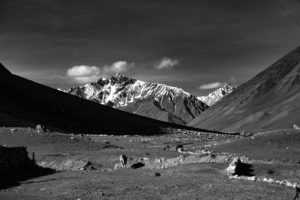
- The urban city of Kaza is a hub for many homestays, restaurants and guest houses which cater to the needs of traveller which produces a lot of biodegradable waste. This biodegradable waste can be used for generating biogas for cooking fuel. Thus Empowering energy techniques like biogas will enable a better sustainability, making life simpler and protecting the valley.
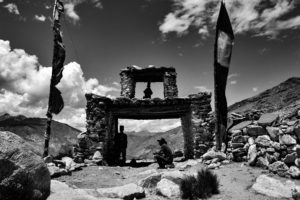
10.Handicrafts, art, fossils and craft have become an important cultural heritage for the enigmatic valley. Despite the harsh climate in Lahaul and Spiti, the local people have excelled in making a variety of handicrafts over the years. These handicrafts vary, thus ranging from household needs to religious artefacts to their creative spirits. These carry holy Buddhist distinct unique art. While coming back from Kinnaur, I witnessed this small carving on stone also known as mane stone, another type is Thangkas( paintings on the silken canvas). There were Chokseys where carvings were made on the wooden tables. Fossils are also preserved through the formation of a fossil centre and also by developing fossil replicas. But these aesthetic art and crafts are disappearing due to lack of promotion and adequate market economic linkage. They are vanishing from the culture, hence for the revival of the Spiti handicrafts and sustain these traditional crafts, empowering the Buddhist ideologies through these rare crafts becomes very necessary.

11.There are various trails which are developed across Spiti to showcase the culture and the nature with direct and indirect linkages of the community. It also aims to lay down certain agendas for human-wildlife conflict, in that region. It also ensures economic benefits, spreading awareness generation and mobilization to the local community also conceptualizing certain policies for responsible practices like garbage management, reduction on the damage of livestock and agricultural practices. Here I would mention how empowerment can be represented through culture again exhibiting special routes and trails for good sustainability.
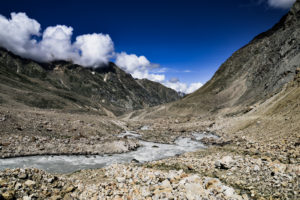
12. Development of Renewable energy like wind and solar is the one of the core objective in the region like Lahaul and Spiti. There is a shortage of electricity when winter hits the desert with harsh climatic conditions thus its idea is to provide clean and sustainable energy thereby utilizing the renewable energy in that area. Its main aim is to provide benefit to all the residents of this region by decentralizing the energy and also providing the starved community with green energy for self-management and self-reliance. Villages like Demul, Komic considered being the remotest village, hence by empowering the knowledge through renewable energy like wind and solar is very simple and not complicated rather than following up a big model of hydropower.



